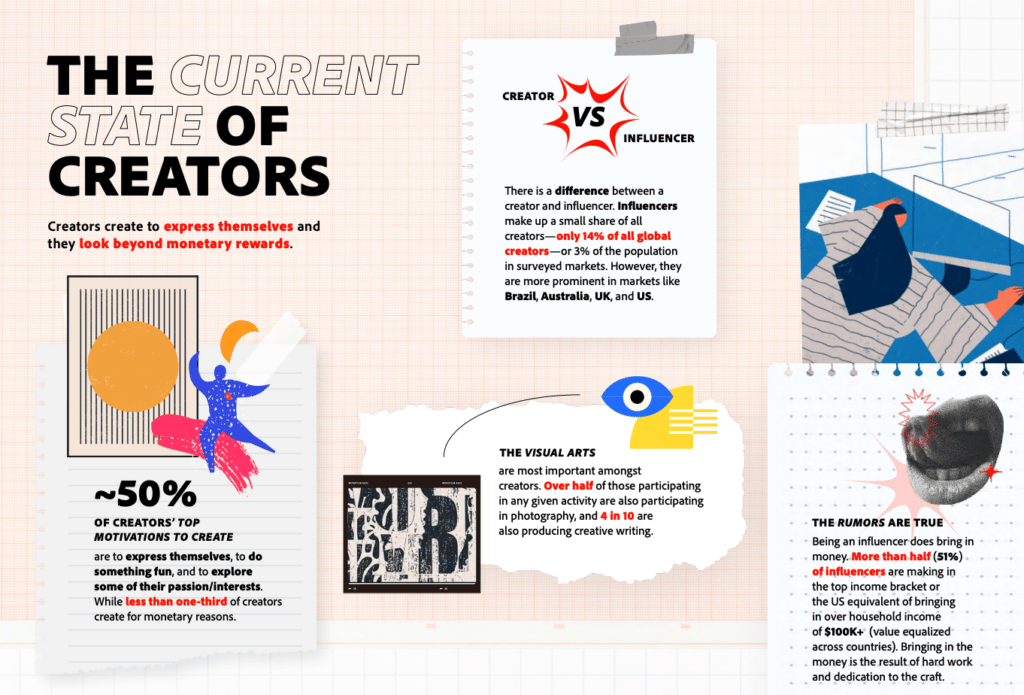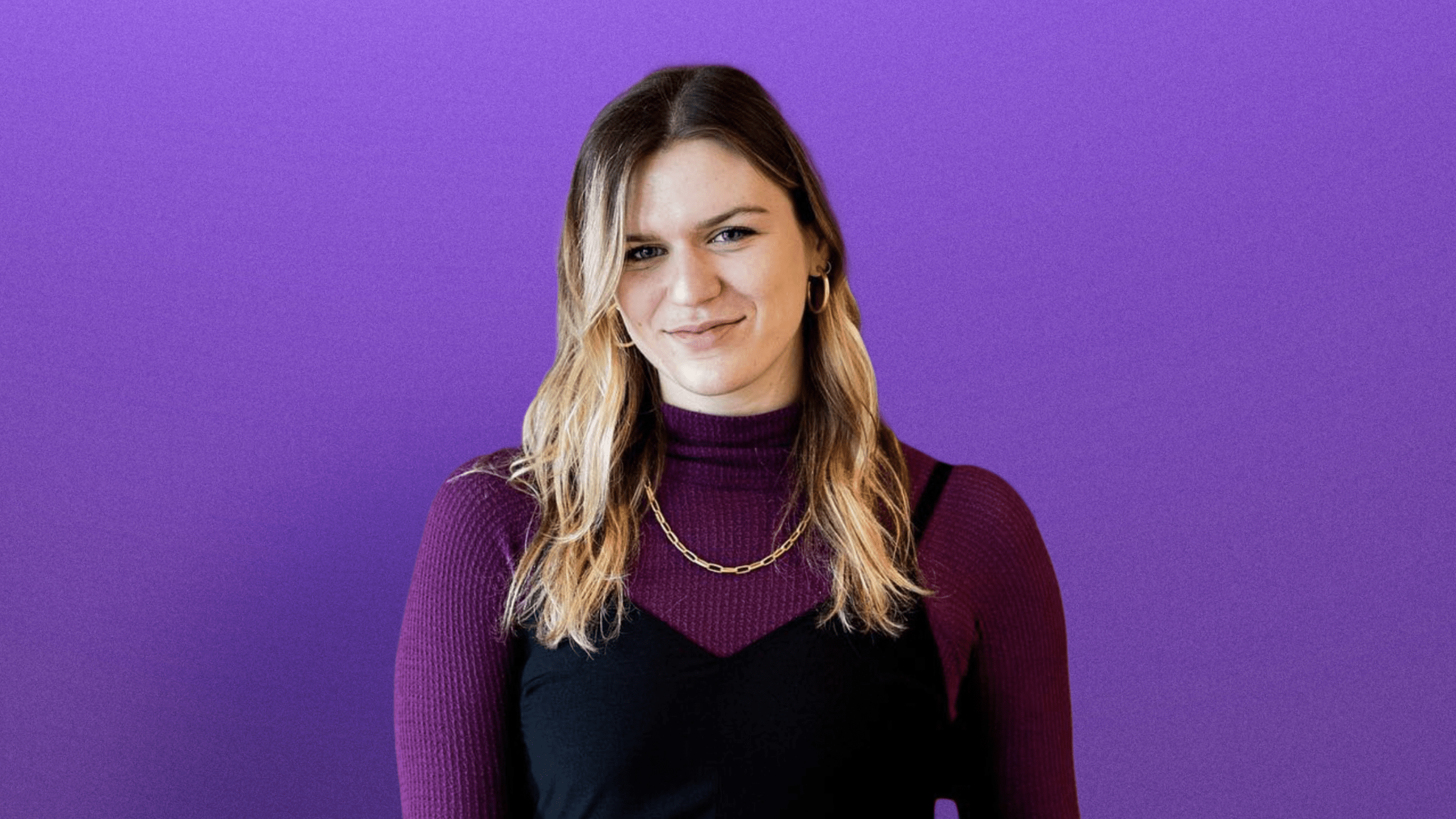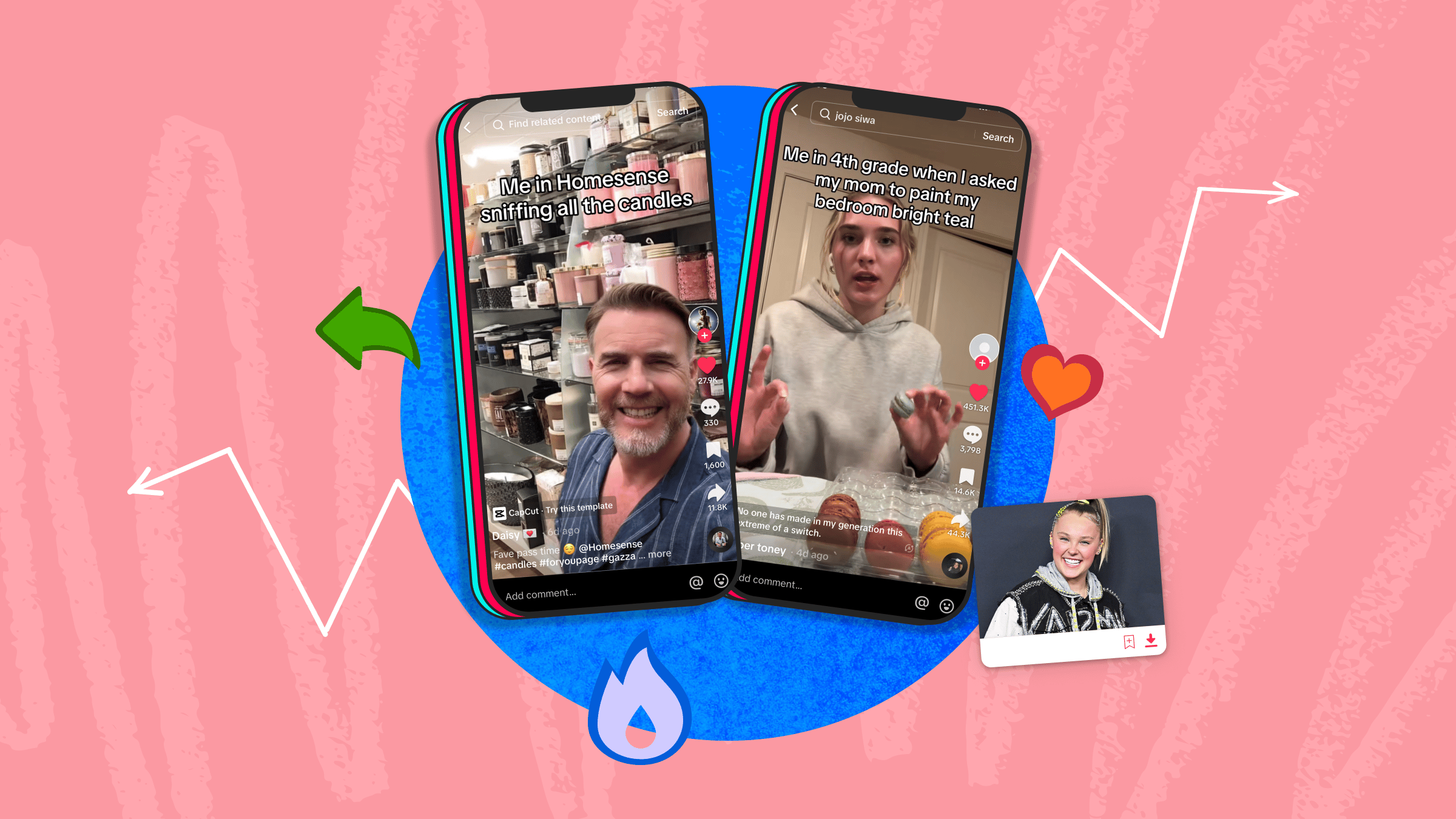Want to explore the future of marketing? Including generative AI, messaging apps, and algorithmic recommendations, here are the top marketing trends we're predicting for 2024.
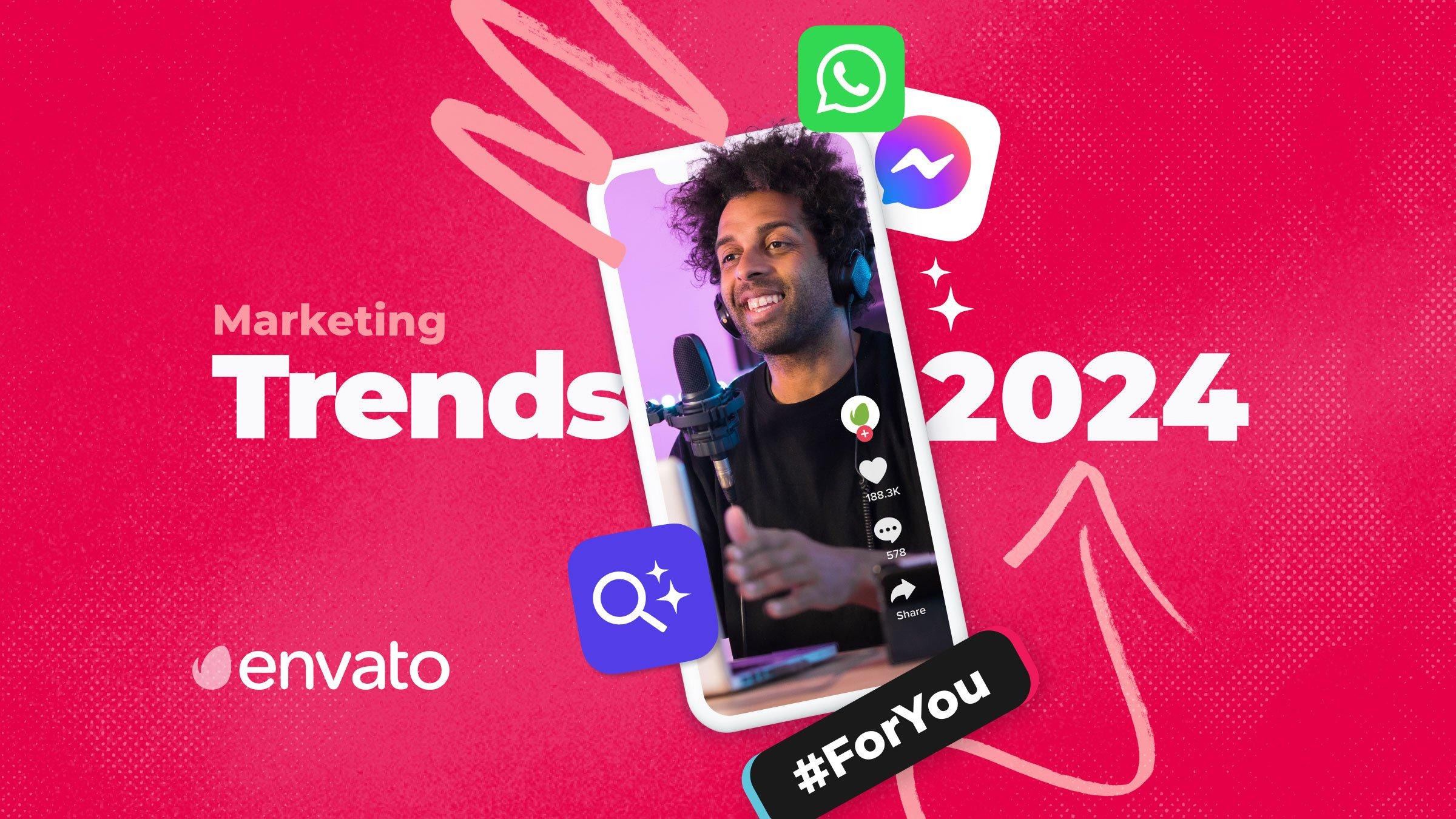
It seems like only yesterday we were predicting the upcoming marketing trends for 2023, yet here we are already on the cusp of 2024! As everyone begins mapping out their 2024 marketing plans, it’s the perfect time to dust off our crystal balls and unveil what exciting trends will shape the industry over the coming year.
Featuring everything from cutting-edge technologies to a blurring of lines between the online world and reality, 2024 promises unexplored realms of marketing innovation – such as the continuing rise of AI, the homogeneity of social media platforms, and the exploding creator economy.
Ready to get a glimpse into the future of marketing? Including generative AI, messaging apps, and algorithmic recommendations, we’re predicting the top marketing trends for 2024.
1. AI Places More Value on Creatives
Generative AI is already changing the way companies market to consumers. Nutella caught the attention of chocolate lovers in Italy when it used AI to generate unique patterns and create seven million one-of-a-kind labels. And it’s not just about visuals; brands also use AI to create written content – from website articles to newsletter campaigns. AI enthusiast Chris McKay used Midjourney to recreate Delta’s marketing campaign, and Cyber Inc. is even using AI to create online video courses.
“We are seeing such an interesting shift in the type of marketing that we need from the advancement of AI, and I think generative AI is going to be huge for marketing,” says HubSpot’s APAC Marketing Director, Kat Warboys. “We will soon see companies using it more frequently and integrating it into their daily processes. However, what AI cannot do is replace humans’ ability to be creative, bring unique perspectives, and entertain. This is where creatives are going to be extremely important.”
Even though AI is popping up in daily marketing processes, it’s still no match for humans’ problem-solving, critical thinking, and creative abilities, meaning imaginative and innovative graphic designers, illustrators, and digital artists will remain extremely important. The benefit is that AI speeds up many manual processes, allowing creatives to work more efficiently and freeing up valuable time to experiment and explore new ideas.
“I think many creatives may be thinking AI is going to replace their role – I think it’s going to make us more efficient, especially for generating new ideas for content,” says Kat. It’s taking away a lot of the ideation, giving us options on title headers, and even helping us fill out the blanks in meta tags from uploading content. AI is just an assistant to help remove manual tasks and allow you to focus on more creative work.”
2. Messaging Apps Go Mainstream
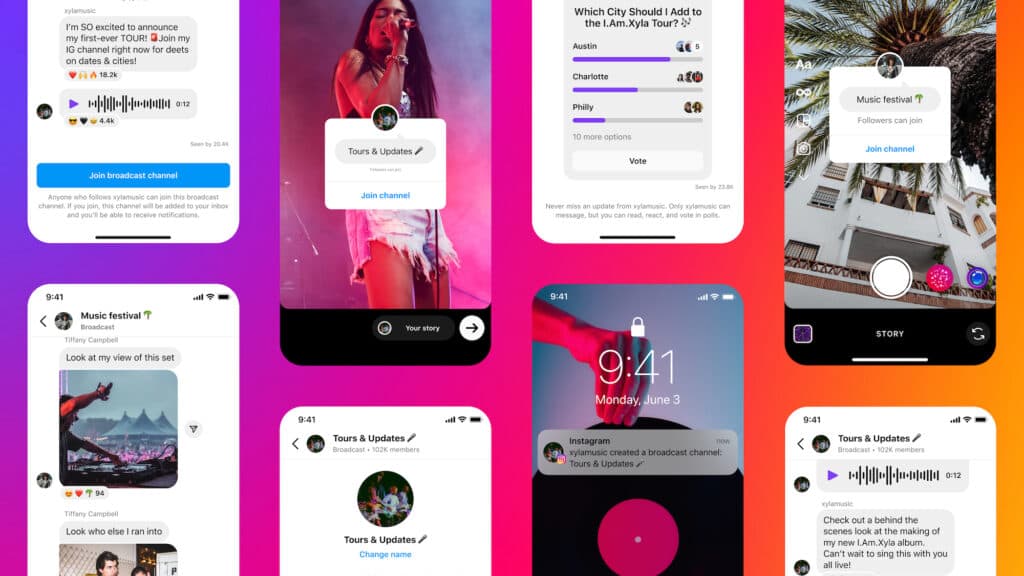
Want to chat to your customers? It’s time to leverage conversational channels like WhatsApp, Facebook Messenger, and SMS for a quick and easy way to connect with the most important people in your business. As part of the “messaging apps go mainstream” trend, we’ve even seen Instagram introduce broadcast channels, enabling creators to engage with their audience on a deeper level.
“Marketers can leverage conversational channels like WhatsApp or SMS to connect with customers, especially in B2B,” says Kat. “I think messaging is growing in popularity as we recognize how much easier it is than email. Top use cases for messaging include booking appointments or meetings, meeting reminders, and new offers, products, or services.”
Messaging for marketing is becoming an increasingly valuable tool for brands and businesses, big and small. Why? Because these apps offer the opportunity to engage and interact with customers in a more personal way.
“In early 2023, Instagram introduced broadcast channels, enabling creators to engage with their audience on a deeper level,” says Roxana Motoc from SocialBee. “Similarly, WhatsApp and Messenger have opened up similar opportunities for connection. In the coming year, we will see more brands increasingly incorporate messaging apps into their social media strategies, leading to a more personalized and direct interaction with their audience.”
3. Platform Specificity Fades
Gone are the days when we went to a particular platform to post certain content. Nowadays, social media platforms are becoming more similar by the day. For instance, we’ve seen Instagram launch Reels to compete with TikTok and grab audiences’ attention through short-form video content – like this short and sweet lifestyle video.
“With social media platforms sharing similar features and becoming increasingly alike, the era of platform-specificity is fading away,” says Roxana. “Take, for instance, Instagram, TikTok, and YouTube, all vying for audiences’ attention through short-form video content and doing so successfully. Another case is LinkedIn; it’s gradually transitioning from its traditionally formal and professional tone to something more personal.”
Another popular example of this trend is Threads from Instagram, an app centered around posting text updates. Sound familiar? It should do, as it offers a Twitter-style microblogging experience with the option to engage by liking, reposting, replying, or quoting a thread.
Typical audiences have also shifted, with older generations embracing platforms like TikTok, which initially attracted a Gen Z following. These changes have nudged social media managers to reconsider their strategies, and – as a result of this marketing trend – repurposing content from one platform to another makes more sense than ever.
4. Brands Prioritize Creator-Style Videos
Next, who wants to see something real-life and relatable? According to this marketing trend, we all see brands prioritizing user-generated video content. This taps into a broader video trend, which sees this content format continue to dominate the digital space.
“Video continues to be a growing and high-performing channel for marketers,” says Kat. “In HubSpot’s 2023 state of marketing report, it was the number 1 channel for highest ROI. Short-form social media video allows companies to show off a more casual, entertaining side of their business, their team, and their mission at work.”
For example, this Adidas partnership with personal fitness coach Britt Cutts captures every kilometer of her City2Surf run in Sydney. It’s honest and unfiltered, enabling the sports brand to show off its more laidback and entertaining side.
Even luxury brands now opt for content-creator-style videos for their luxury marketing campaigns rather than high-end, polished video content to demonstrate their authenticity to audiences. From global campaigns to behind-the-scenes sneak peeks, we expect to enjoy more creator-style video content in 2024.
5. The Line Between Online & Reality Blurs
As the gap between our online and offline lives closes, we see many futuristic, fantastical, and sometimes freaky marketing possibilities opening up. Like Meta’s recent AI Chatbots launch – a partnership with ‘cultural icons and influencers’ that enables users to interact with AI versions of Snoop Dogg, Kendall Jenner, and Paris Hilton – to name just a few. But whether they’re A-listers or your average Joe, AI-generated avatars are revolutionizing customer interactions, taking marketing personalization to a different dimension.
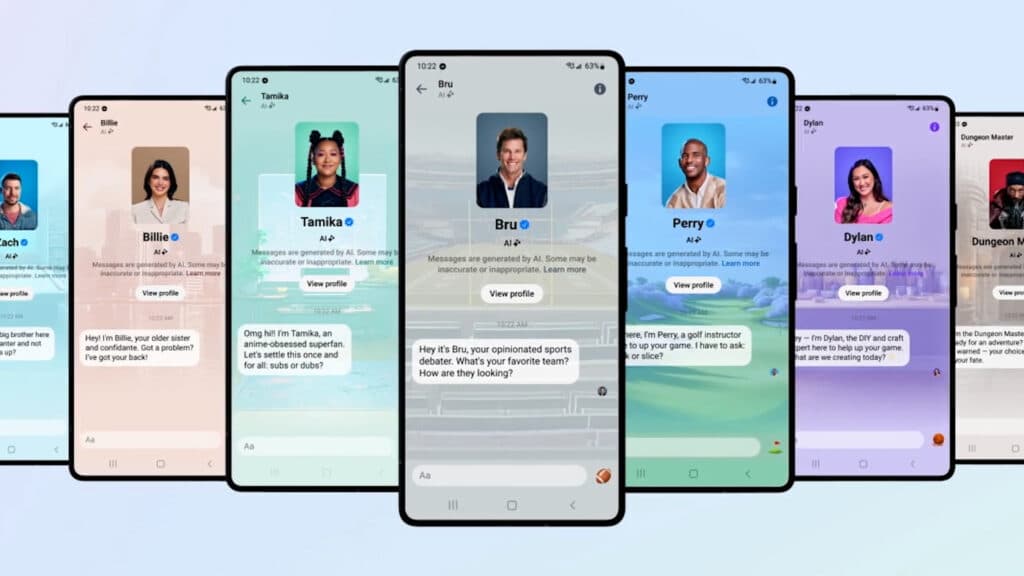
“We will soon start to see the blurred lines between online life and real life – a social media dystopia,” says Hannah Copeland, Social Media Specialist at Envato. For example, Meta launched AI Chatbots based on celebrities and influencers. Other AI tools in a similar vein have begun popping up where celebrities or influencers are signing themselves up, like Forever Companion. However, using talent in digital AI raises the question of perpetuity, which relates to the Hollywood actors’ strike.
“We can expect to see a deeper understanding of AI concerns in a more mainstream sense, especially as brands continue working and partnering with digital creators.”
This trend also sees brands partnering with digital creators making waves in the real world, like TubeGirl – or Sabrina Bahsoon – who posts TikToks of herself lip-syncing and dancing like no one’s watching on London’s underground rail network. Her single-video collaboration with MAC Cosmetics achieved 160,000 views on the make-up brand’s TikTok channel.
Her unapologetic self-expression has inspired people worldwide, and several brands have seized the opportunity to post their own take on the trend – from Uniqlo Singapore to a local Mitsubishi car dealership.
“The #TubeGirl TikTok trend is indicative of a future where people are more comfortable behaving more eccentrically in public for the benefit of their social media presence,” says Hannah. “Perhaps valuing their online life over their reality – Black Mirror who?”
6. SEO and Social Media Merge
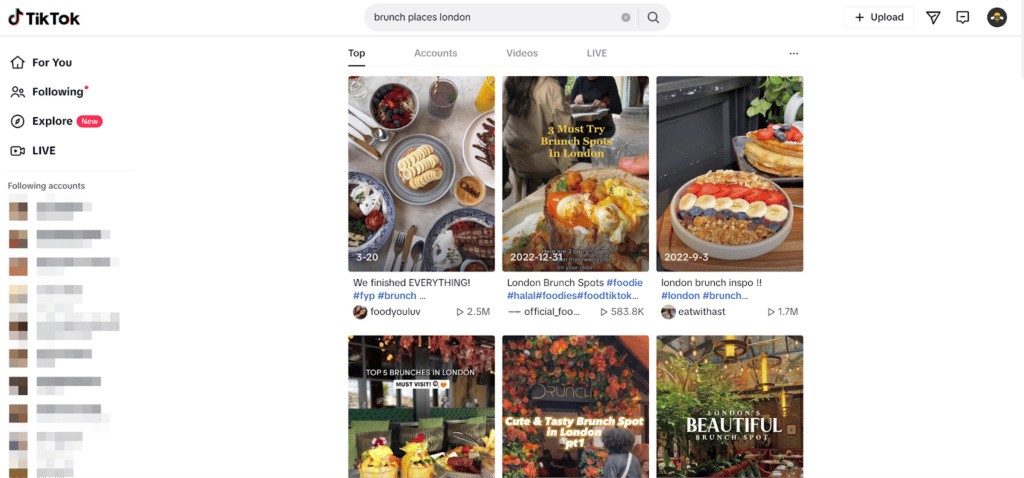
Did you think TikTok was all reaction videos and outfit reveals? News flash – it’s also a compelling platform for online search. In fact, many social media platforms now serve as search engines in their own right. Posts from LinkedIn, Pinterest, YouTube, and TikTok are increasingly showing up at the top of search engine results pages – and marketers are noticing.
“One trend taking off in 2024 is social media mixing with SEO,” says Roxana. “Platforms like TikTok now serve as search engines in their own right, and social media posts from platforms such as LinkedIn, Pinterest, YouTube, and TikTok are increasingly showing up among the top results in SERP. This indicates that keyword research won’t be limited to content and digital marketing teams anymore, as it will play a pivotal role in optimizing social media content for search engines.”
When people use TikTok as a search engine, they receive up-to-date information delivered in a quick-to-understand and visually appealing format, via videos that are usually less than a minute long. And because the platforms’ ever-evolving algorithm knows its users very well, brands can be sure their posts will reach the right people.
7. The Creator Economy Explodes
This next trend celebrates a movement that’s been several years in the making. Since 2020, more than 165 million people have joined the creator economy. This rapid expansion was one of the main focuses of this year’s Adobe MAX – Adobe’s annual creativity conference – and the company has even released a brand-new podcast called In the Making. It celebrates the intersection of creativity, community, and business, featuring conversations with content creators, solopreneurs, entrepreneurs, and small business owners; it’s intended to inform and inspire people in – or hoping to join – the creator economy.
“The volume of creative output expected in the coming years is astounding. Some studies say it will grow five times in the next two years,” says Noelle Kim, Chief Marketing Officer at Envato. “Marketers used to be able to produce one high-investment TV ad, and it would be guaranteed to be watched millions of times over. Now you need to produce 20 times that content across various digital channels, and you’re lucky if people watch it more than once. However, with the right creative like a viral social post, you get a far greater reach. So we need lots of ideas, quality ideas, and fast creative execution and iteration.”
With an Adobe survey finding that 48% of creators are motivated by the same goal – freedom of expression – we expect to see more and more tips, tricks, and hacks emerging to streamline and support their output.
For example, content batching – or creating a large volume of content in a single session – is becoming popular. This approach gained traction in 2023 for freeing up time, energy, and headspace for other essential activities.
“With the creator economy increasing, another trend we expect to keep seeing is bulk preparation,” says Roxana. “Creating content in bulk is similar to preparing meals for the week ahead. It allows you to complete tasks in a single, hyperfocused session and will remain a significant trend in 2024.”
8. Algorithmic Recommendations Overtake User-Curated Content

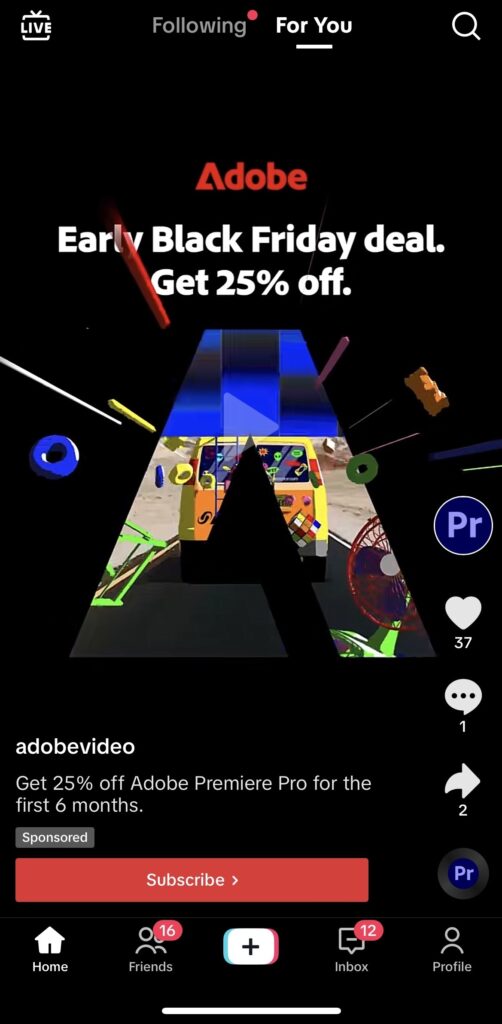
Our final trend is all about how we decide what we consume online. Rather than asking friends, family, and followers for suggestions, we’re using the ‘for you’ function now ubiquitous on social media and streaming services – TikTok’s For You Page, for example.
“Over the coming year, social media users will rely more heavily on their algorithmic recommendations rather than seeking and selecting content they want to consume,” says Hannah. “We’ve experienced a shift from Friend/Follower use of the internet to For You/Recommended internet, essentially surrendering our agency online.”
In the face of less user-selected content and more algorithm-centric consumption models, it will be essential for brands and marketers to build strong communities and include keyword-heavy copy moving forward. This will make your content appear on a curated recommendations page that will resonate with the viewer as it aligns with their interests.
And that’s a wrap on our Marketing Trends predictions for 2024! While you’re here, take a look at our top Graphic Design Trends Predictions for 2024, or head to Envato Elements to find everything from marketing assets to social media templates.


